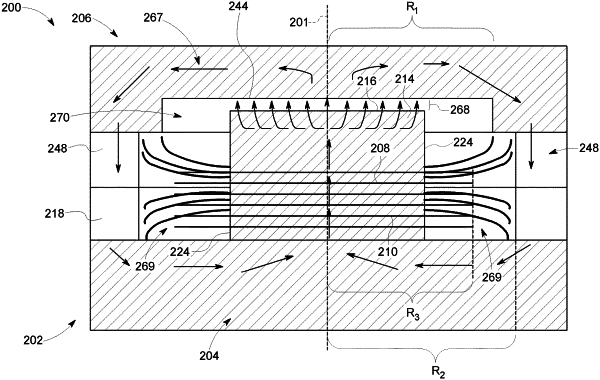| CPC H01F 27/24 (2013.01) [H01F 3/14 (2013.01); H01F 27/2804 (2013.01); H01F 41/0206 (2013.01)] | 19 Claims |

|
1. An integrated magnetic assembly comprising:
a magnetic core comprising:
a first component comprising a first face and a winding leg extending from the first face, the winding leg comprising a top face spaced from and oriented generally parallel to the first face;
a second component coupled to the first component, the second component comprising (i) a distal face facing the first face, (ii) a second face recessed from the distal face, (iii) a third face recessed from and oriented generally parallel to the second face, and (iv) a recess sidewall extending between the second face and the third face, wherein the third face and the recess sidewall define a recess within the second face, and wherein a gap is defined between the top face and the third face;
an input winding inductively coupled to the magnetic core, the input winding wound around the winding leg; and
an output winding inductively coupled to the magnetic core, the output winding wound around the winding leg,
wherein the input winding and the output winding define an outer winding perimeter, wherein a radial distance between a center point of the winding leg and the outer winding perimeter is less than the radial distance between a center point of the third face and the recess sidewall,
wherein the first component and the second component are coupled and define a main magnetic flux path along which magnetic flux flows when the input winding is coupled to an electrical current, and
wherein fringing flux at least in part due to the presence of the gap is induced to flow in a direction generally parallel to the input winding and the output winding.
|